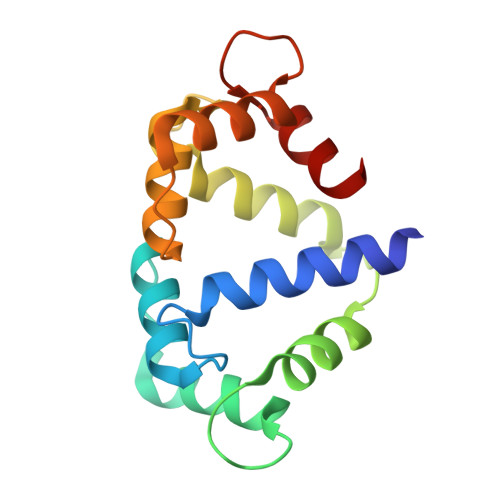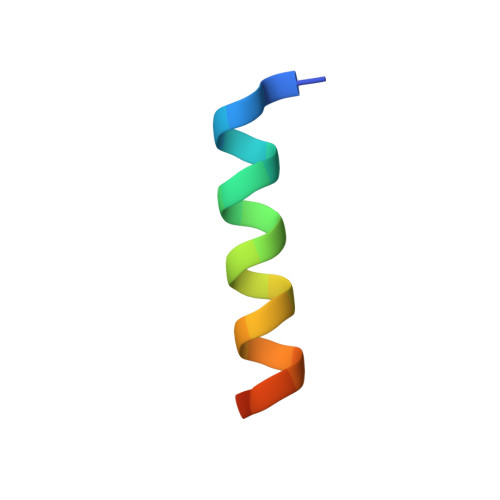Calmodulin variant E140G associated with long QT syndrome impairs CaMKII delta autophosphorylation and L-type calcium channel inactivation.
Prakash, O., Gupta, N., Milburn, A., McCormick, L., Deugi, V., Fisch, P., Wyles, J., Thomas, N.L., Antonyuk, S., Dart, C., Helassa, N.(2022) J Biol Chem 299: 102777-102777
- PubMed: 36496072
- DOI: https://doi.org/10.1016/j.jbc.2022.102777
- Primary Citation of Related Structures:
7ZRP, 7ZRQ - PubMed Abstract:
Long QT syndrome (LQTS) is a human inherited heart condition that can cause life-threatening arrhythmia including sudden cardiac death. Mutations in the ubiquitous Ca 2+ -sensing protein calmodulin (CaM) are associated with LQTS, but the molecular mechanism by which these mutations lead to irregular heartbeats is not fully understood. Here, we use a multidisciplinary approach including protein biophysics, structural biology, confocal imaging, and patch-clamp electrophysiology to determine the effect of the disease-associated CaM mutation E140G on CaM structure and function. We present novel data showing that mutant-regulated CaMKIIδ kinase activity is impaired with a significant reduction in enzyme autophosphorylation rate. We report the first high-resolution crystal structure of a LQTS-associated CaM variant in complex with the CaMKIIδ peptide, which shows significant structural differences, compared to the WT complex. Furthermore, we demonstrate that the E140G mutation significantly disrupted Ca v 1.2 Ca 2+ /CaM-dependent inactivation, while cardiac ryanodine receptor (RyR2) activity remained unaffected. In addition, we show that the LQTS-associated mutation alters CaM's Ca 2+ -binding characteristics, secondary structure content, and interaction with key partners involved in excitation-contraction coupling (CaMKIIδ, Ca v 1.2, RyR2). In conclusion, LQTS-associated CaM mutation E140G severely impacts the structure-function relationship of CaM and its regulation of CaMKIIδ and Ca v 1.2. This provides a crucial insight into the molecular factors contributing to CaM-mediated arrhythmias with a central role for CaMKIIδ.
Organizational Affiliation:
Liverpool Centre for Cardiovascular Science, Department of Cardiovascular and Metabolic Medicine, Institute of Life Course and Medical Sciences, Faculty of Health and Life Sciences, University of Liverpool, Liverpool, United Kingdom.

















